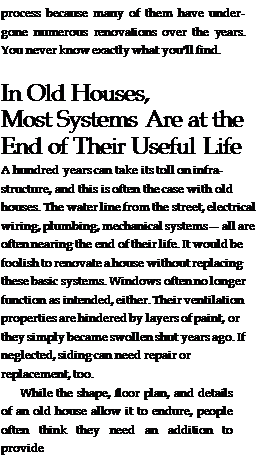Can a Vintage Home Be Energy Efficient?
■ BY BETSY PETTIT
 In America, there are around 58 million houses that were built before the last energy crisis. Because these pre-1970s houses have little or no insulation, they are all ripe for energy-efficiency improvements. Houses eat up 20% of the energy used in this country and account for 21% of the carbon dioxide that contributes to global warming. This adds up to a huge opportunity.
In America, there are around 58 million houses that were built before the last energy crisis. Because these pre-1970s houses have little or no insulation, they are all ripe for energy-efficiency improvements. Houses eat up 20% of the energy used in this country and account for 21% of the carbon dioxide that contributes to global warming. This adds up to a huge opportunity.
America’s old houses can be made much tighter and can even approach net-zero energy use. Here, I’ll highlight three houses that my company, Building Science Corp., has renovated. Each house had different limitations and learning curves. I share one of the houses with my husband and business partner, Joe Lstiburek, and two of them have been used as our office space.
Renovating an old house is an expensive process. It’s also a delicate process because the end product must retain its charm. Most old houses are still around because people love their timeless form, floor plan, trim, details, and historical significance. Renovating an old house is a surprising and challenging

another bathroom, bedroom, office, or better views. Then they spend money building an addition, only to spend all their time in this new space because the rest of the house is uncomfortable. They don’t really get more space in this deal; they get a smaller space that’s comfortable.






Leave a reply